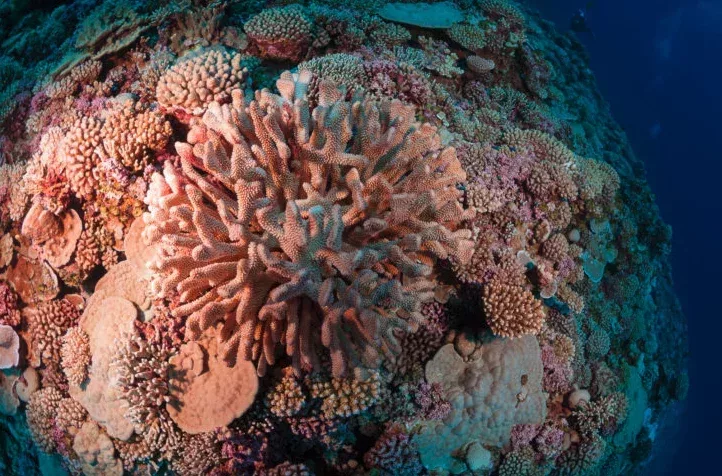On the Global Reef Expedition mission to French Polynesia, the Khaled bin Sultan Living Oceans Foundation (KSLOF) had the chance to study many remote coral reefs, some of which had never been surveyed by scientists before. But of all the reefs surveyed in French Polynesia, the reefs in Gambier Archipelago stand out as truly spectacular and had some of the highest coral cover found on the entire Global Reef Expedition. The reef communities of the remote atolls of the Acteon Group in Gambier often had 50-90% live coral cover extending from just below the water’s surface to over 30 meters depth. This type of coral cover is unprecedented for the South Pacific, and we were thrilled to witness these thriving reefs.
Coral cover is the recorded proportion of the seafloor that is covered by live stony coral. It is important because live coral cover is not only an indicator of reef resilience, the structure and complexity of the reefscape provides critical habitat for many different species of fish and invertebrates. Generally speaking, the more coral there is, the more habitat is available for animals that live in or on the reef.
The Gambier Archipelago exhibited extraordinary coral reef communities. The percentage of coral cover was not only the highest observed by KSLOF in French Polynesia but when compared to other locations surveyed on the Global Reef Expedition, the average cover proved to be exceptionally high globally. To put what was found into perspective, the coral cover we measured in the Aceton Group in French Polynesia is about twice as high as what scientists estimate is the average live coral cover for a reef.
Although changes to the reefs have occurred since the Global Reef Expedition in 2013, what was seen gives hope for the future of French Polynesia’s coral reefs.
Original Source: Khaled bin Sultan Living Oceans Foundation

